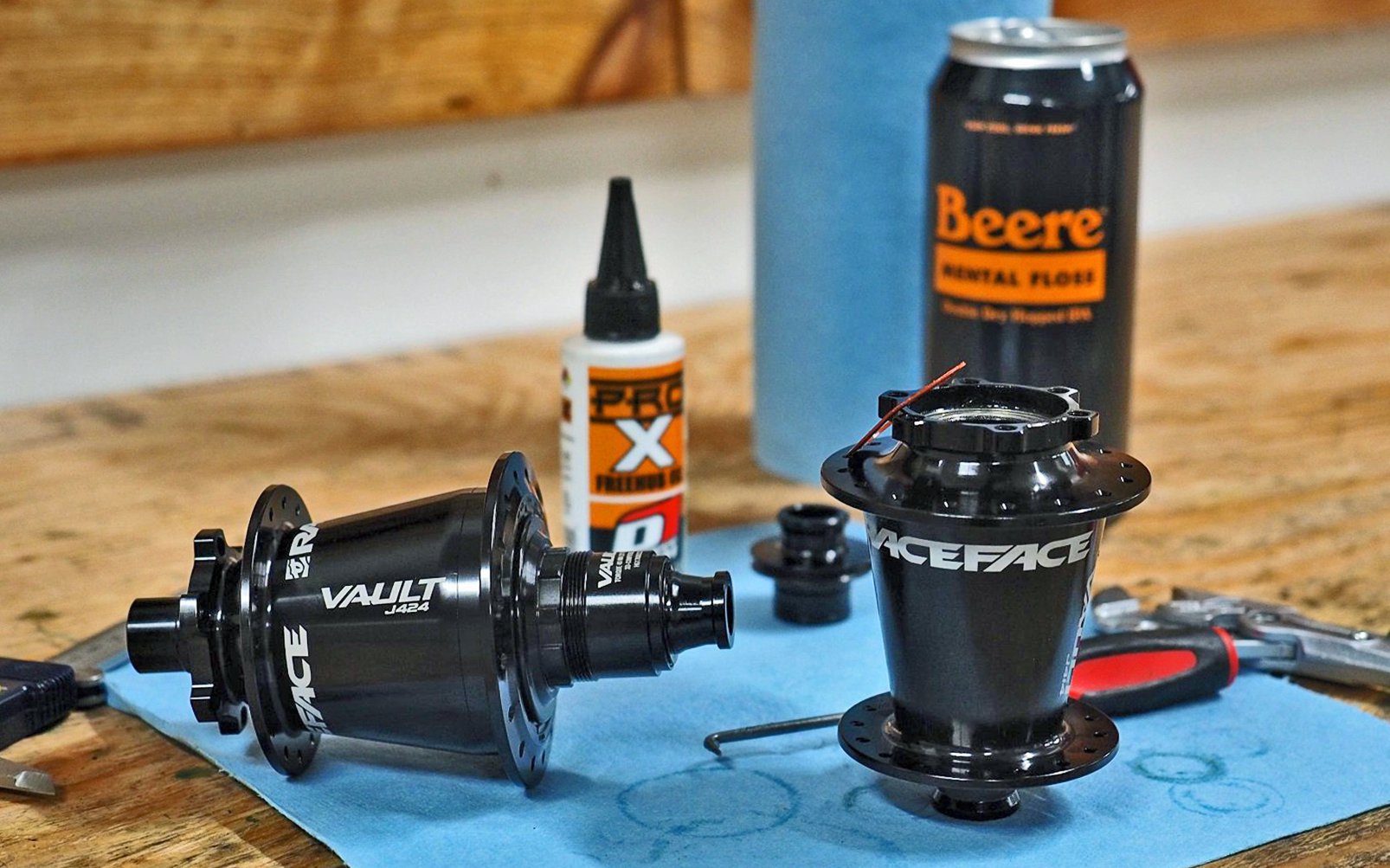
Teardown | First Impressions
Race Face Vault Hubs Teardown
32...
The answer to the ultimate question of life, the universe, and everything. Okay, not so much. But at the very least it's the correct answer to the number of spokes that should be in a bicycle wheel. Sixteen per side. Sixty-four per set. And thirty-two glorious blades of stainless steel wire unspooled, straightened, cut, formed, butted, bent and finally rolled for threads.
Fine, twenty-eight spokes are great too. And yes, carbon rims open up different possibilities for lacing. Maybe aggressive 29" wheels should go back to the thirty-six spokes that used to be fairly standard with DH wheels. But, the fact is that wheels with thirty-two j-bend spokes won the war of popular opinion a long time ago and since then their hegemony is being constantly eroded by efforts to save weight and cost.
Me, I'll take thirty-two of Cupid's stainless j-bend arrows lovingly laced three-cross into a rim of my choice any day. And friends, I know I'm not the only one. Race Face had many asks, internally and externally, to produce the direct pull hub from their Next R, Turbine R, and Atlas wheels as a stand-alone j-bend product.
That hub is now the 32h Vault*.
*which is also available in 28h drilling
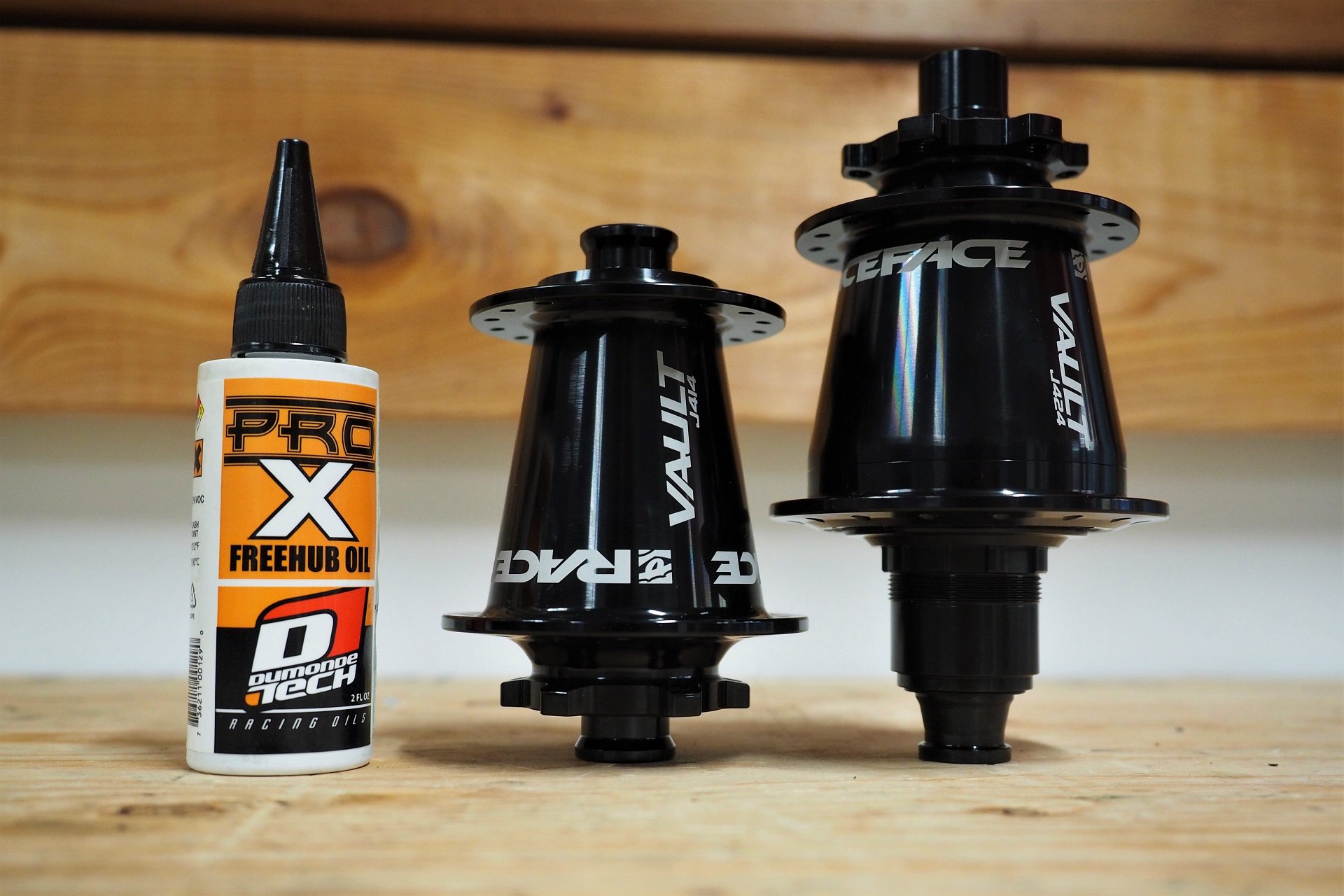
No specialty tools required. The Vault hubs aim to combine impressive sealing from the elements with simple service.
Race Face uses a unique six pawl inverted driver. With two teeth per pawl hitting the 60-tooth driver for 120-points of engagement, it delivers a tight 3° of rotation between bite points. The hubs are available in every possible configuration except Super Boost. You can run the standard 157x12mm version of the Vault on your Pivot Switchblade or Knolly Fugitive but then you aren't reaping all those massive stiffness gains.
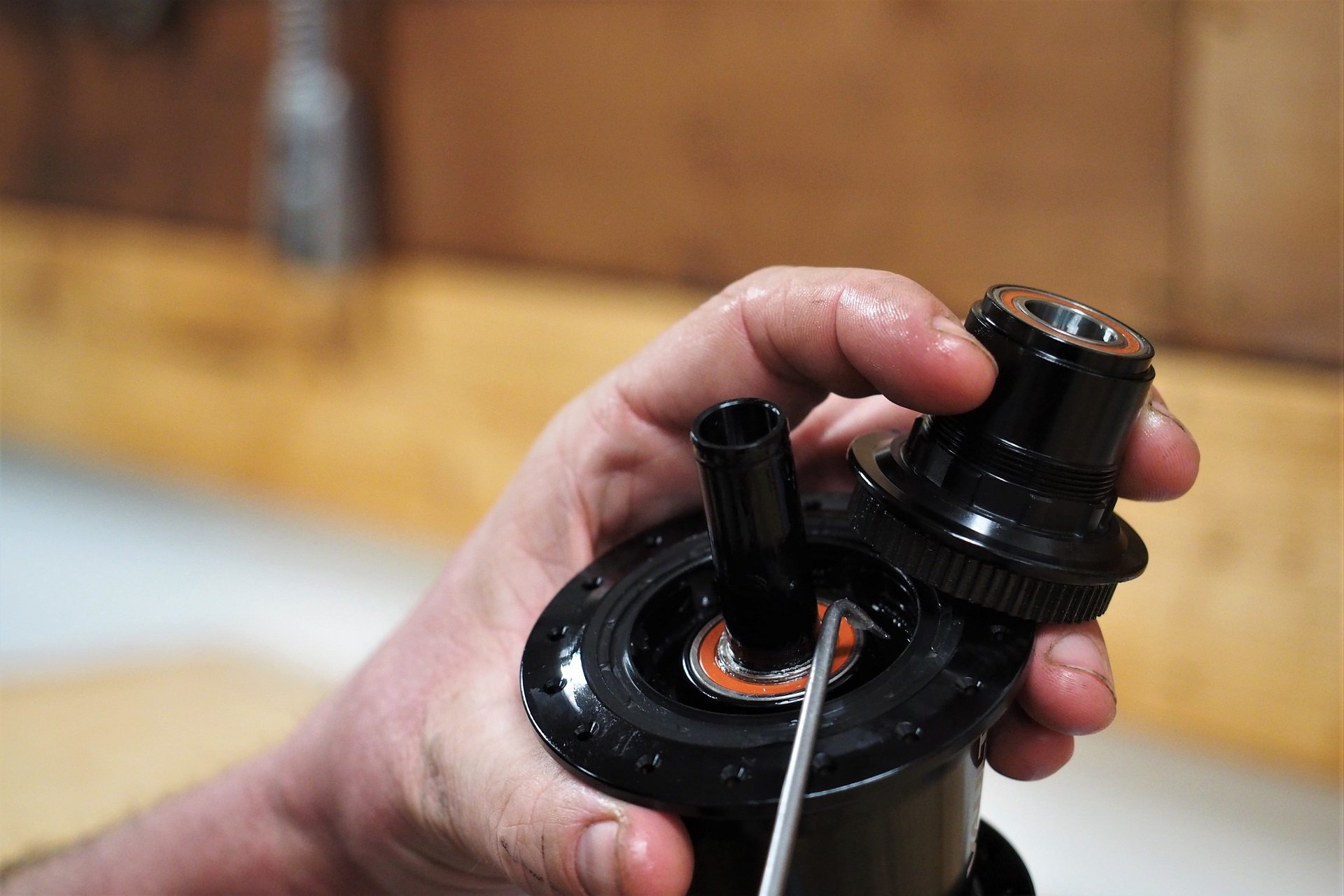
The massive rear hub shell doesn't just look mean. It uses an inverted drive system where the 6x pawls are housed in the shell and the 60-tooth driver is mounted to the freehub body.
So to sum that up:
Vault front hubs are available in: 15x100, 15x100 Torque Cap, 15x110 (Boost), 15x110 Torque Cap, 20x110 (OG), 20x110 (Boost, and the lowly 9x100 QR.
Vault rear hubs are available in: 12x135, 12x142, 12x148 (Boost), 12x150, 12x157 (OG), and even 10x135 QR.There is some interchangeability of axles - for example, the Torque Cap hubs use the same shells as the 10x135, 12x135, and 12x142 rear hubs - and I will have a complete break down of swap-ability for my review.
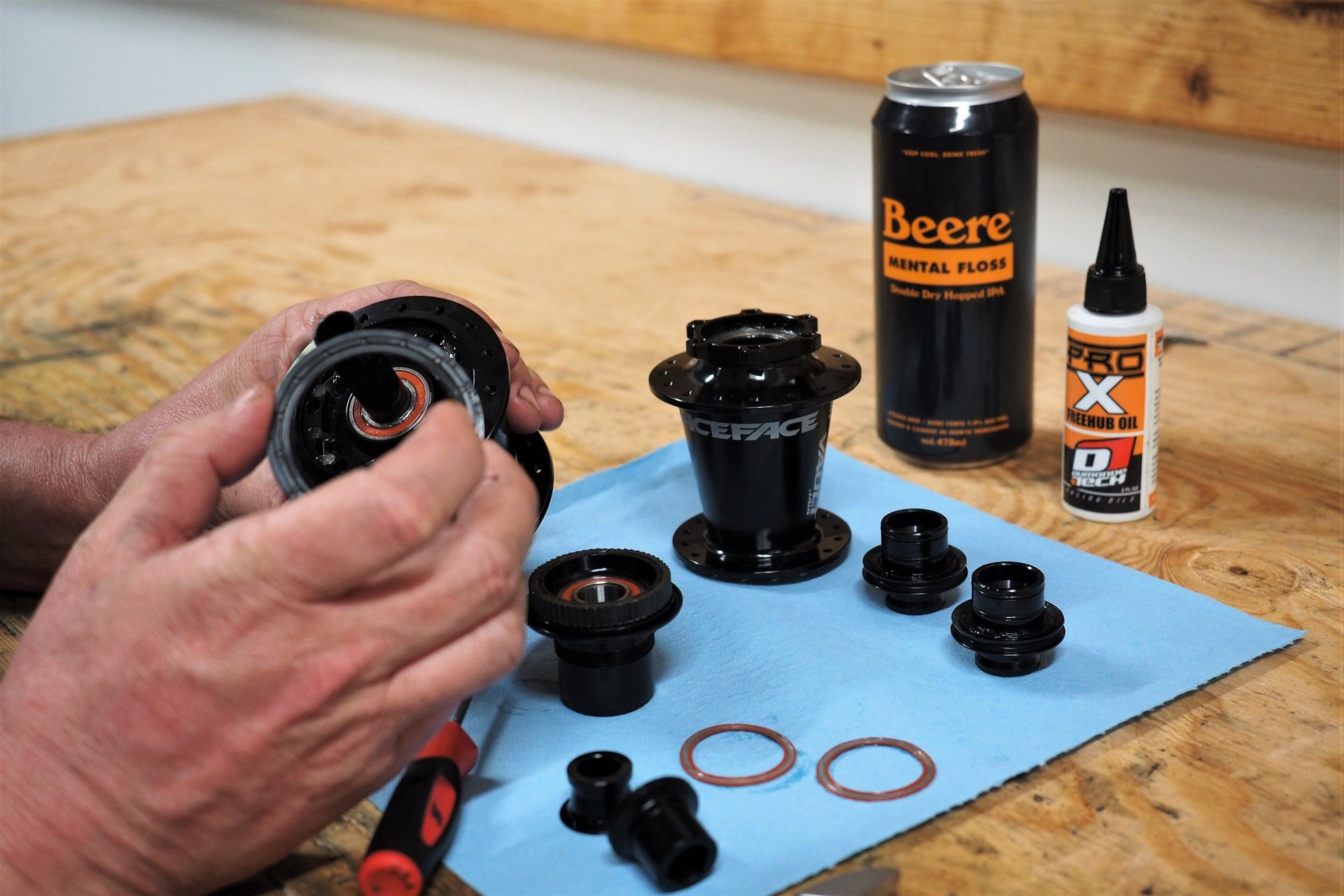
Fast (3°) engagement, easy service, sealed from the elements, and a loud coasting Helloooooooooooo from the driver to greet other trail users on busy singletrack. The quintessential wet-coast hub.
Wheel Build
Technically Vault flanges are sized so one spoke size can be used both front and rear assuming the same rim ERD. In my case, laced 3-cross with into a pair of Race Face ARC 30 rims, the magic single number would be 289mm. There are lots of shops in town with spoke cutters and I will get a couple of 289mm spokes cut as spares at some point, but in the meantime, these wheels each have 16x 288mm and 16 x 290mm spokes. I prefer brass nipples of the non-boring variety so it's TLC Brass nipples throughout.
I do most my own work on bikes, but I'm not confident enough in my wheel building to 'test' a set of wheels I've built. This pair was built up by my friend Jessica, an instructor with Bikeroom and the wrench at Essential Cycles.
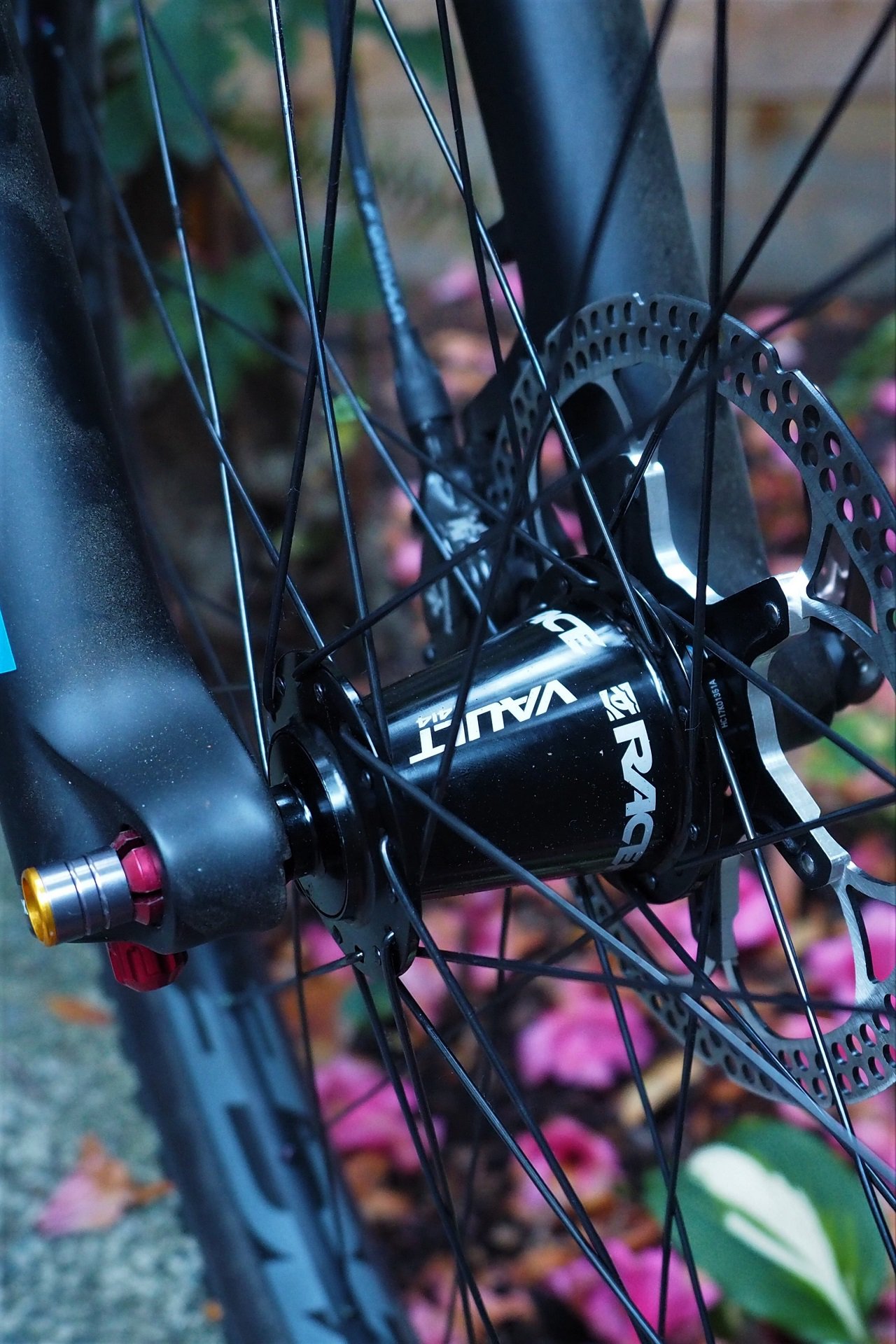
With alloy rims, particularly for 29" wheels, I prefer three-cross lacing. It works for me in terms of maximizing durability and minimizing windup.
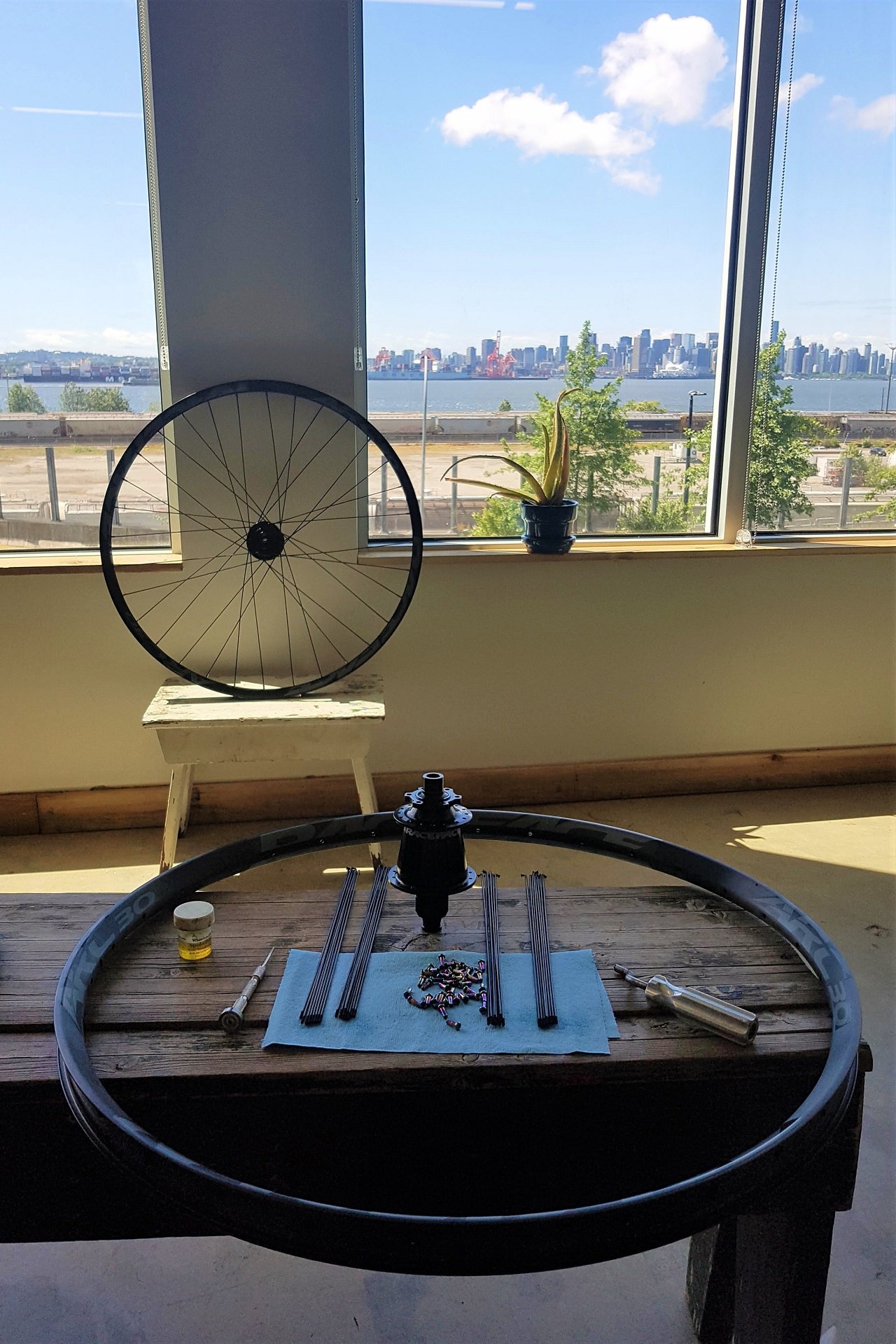
Race Face hubs and rims so why not just get a pair of their wheels? There's something - je ne sais quoi - about knowing who built your wheels. Photo: Jess
I prefer a three-cross lacing pattern, particularly for aluminum 29'er rims. On the trail this reduced wind-up when accelerating and anecdotally my rims last longer laced this way. I run fairly big tires (minimum 2.35") so I'm not convinced that spoke lacing (two-cross vs three-cross vs some combination) is making a notable difference to compliance on the trail but if this was a road wheelset I'd say the three-cross is the best balance of lateral, vertical, and torsional rigidity.
Seals, Seals, Seals
Jeff and I have torn down quite a few hubs in the name of science. Well, at the very least in the name of having a good excuse to drink some beers on a work night. They all employ some variety of shields and seals to keep lube in, the elements out, and to hopefully accomplish both goals without introducing a ton a drag.
From lip seals on the end caps to the large seals protecting the inverted 6-pawl driver, Race Face has certainly gone out of their way to rubberize the Vault hubs. Drag is a non-issue out of the box and for the long-term review I'll be checking in on ingress and efficiency.
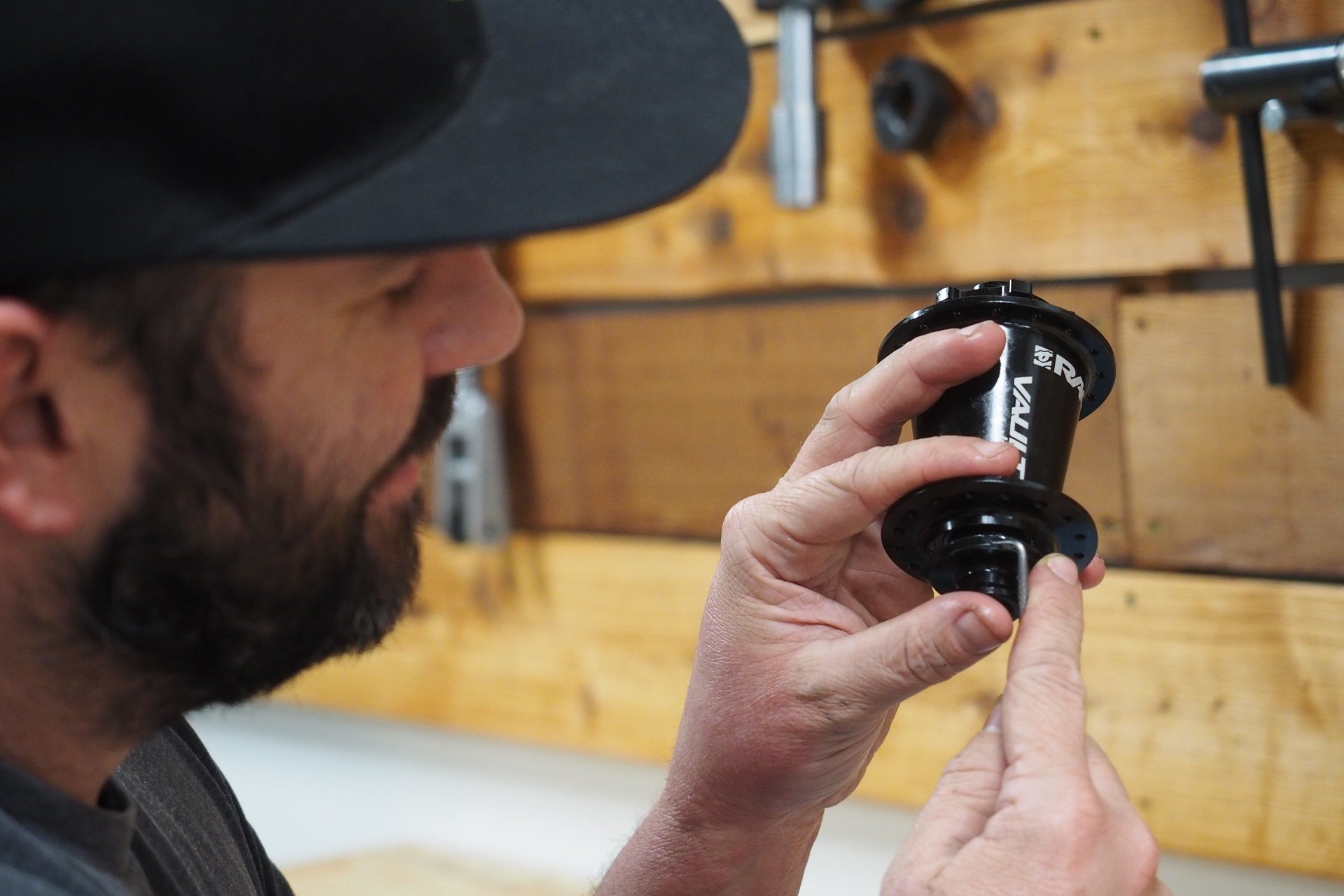
Seals make Jeff smile.
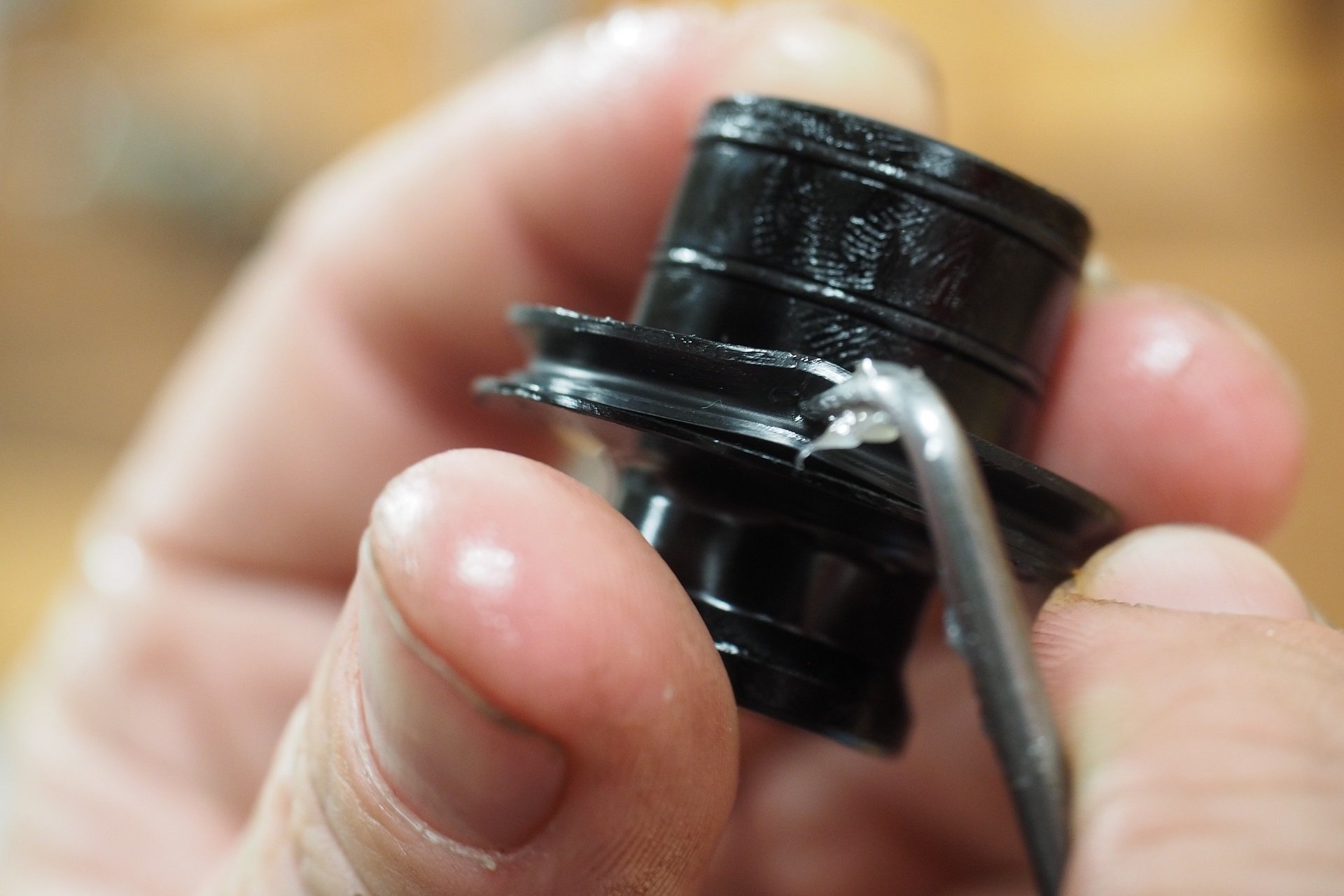
End cap lip seal.
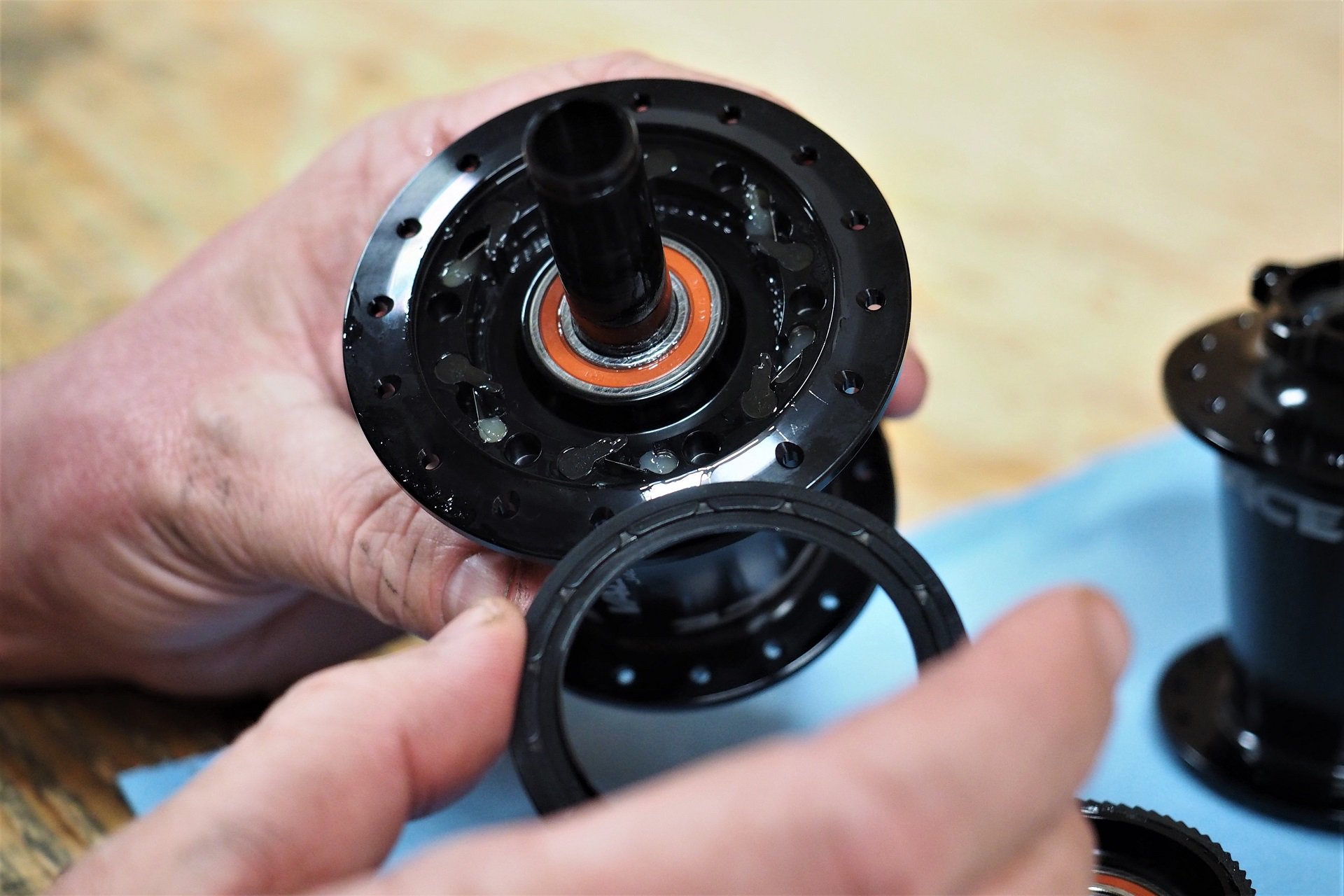
Large seal protecting the driver and pawls.
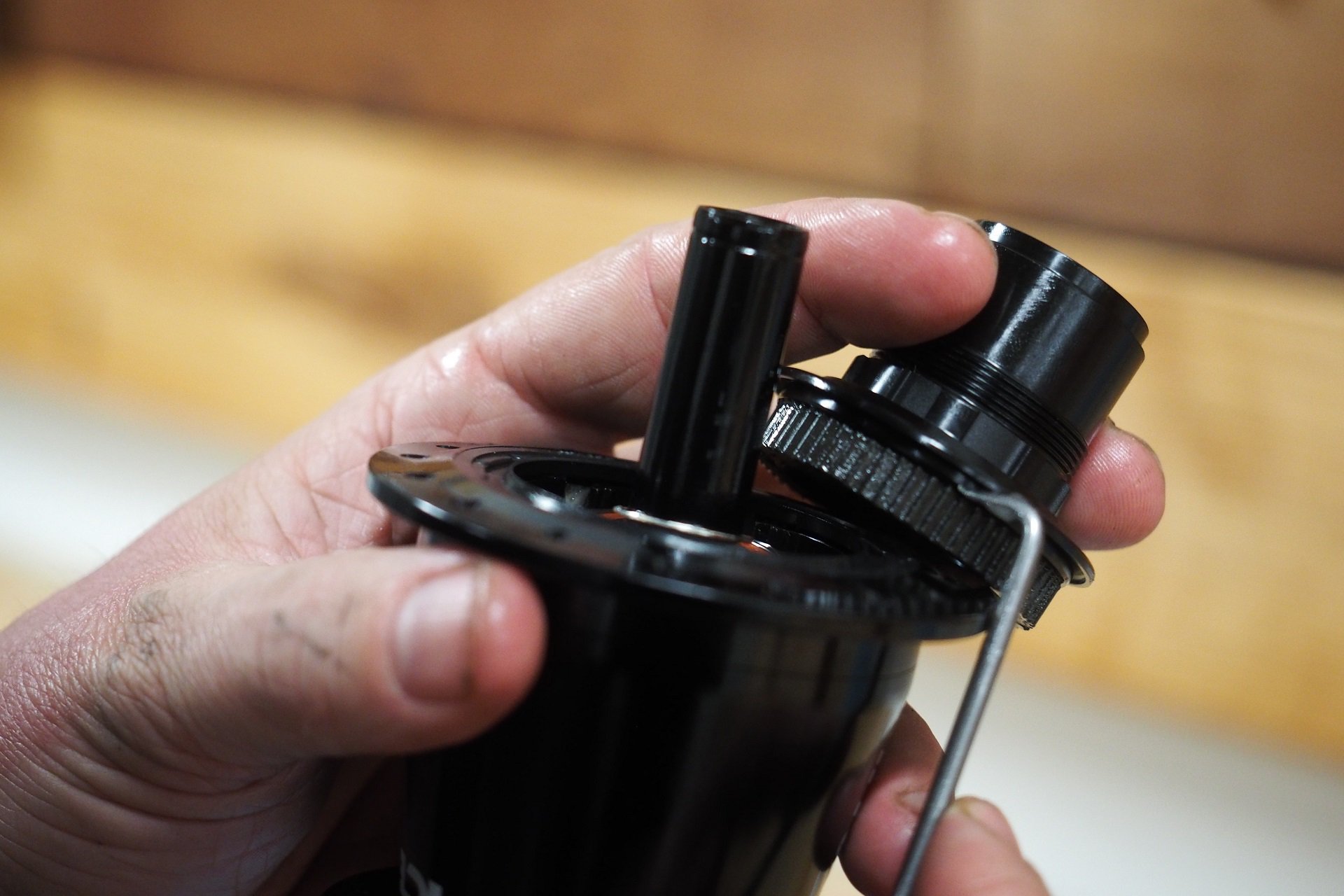
Freehub seal between the cassette and 60-tooth driver.
Basic Service
The Vault's bearings are well lubricated and the factory grease is thick enough that I think it will do a good job while at the same time the bearings spin with little effort.
If I am going to quibble, aside from Chris King making their own bearings, the nicest I've come across are the Japanese-made EZO bearings that come stock in Project 321 hubs. At 350 USD for the rear hub and keeping the SKUs tight by offering the Henry Ford color options, I'd love to see a premium INA or EZO bearing equipped here.
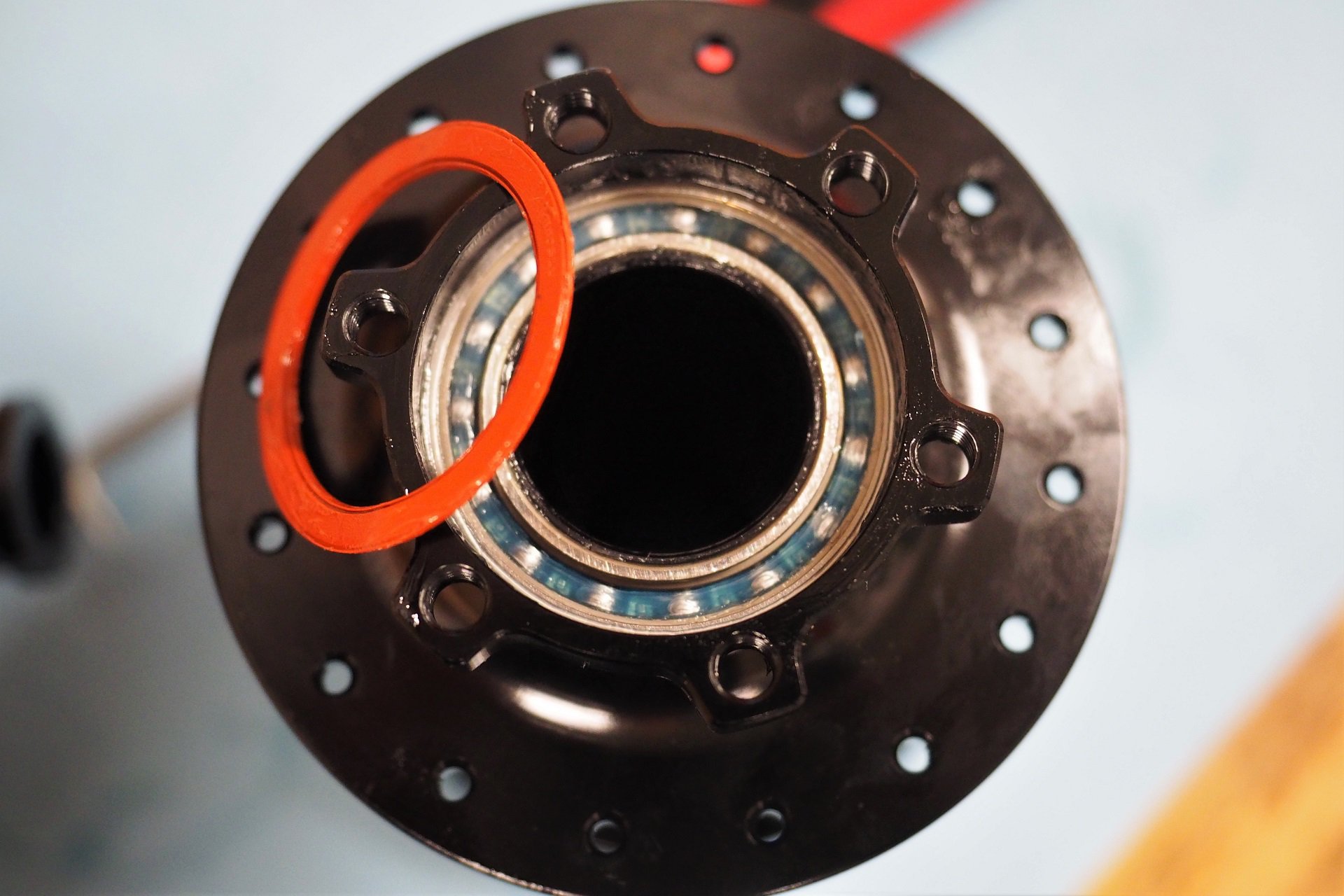
Race Face nails the well-greased hub bearings, right out of the box, with both the Vault and the budget Aeffect option.
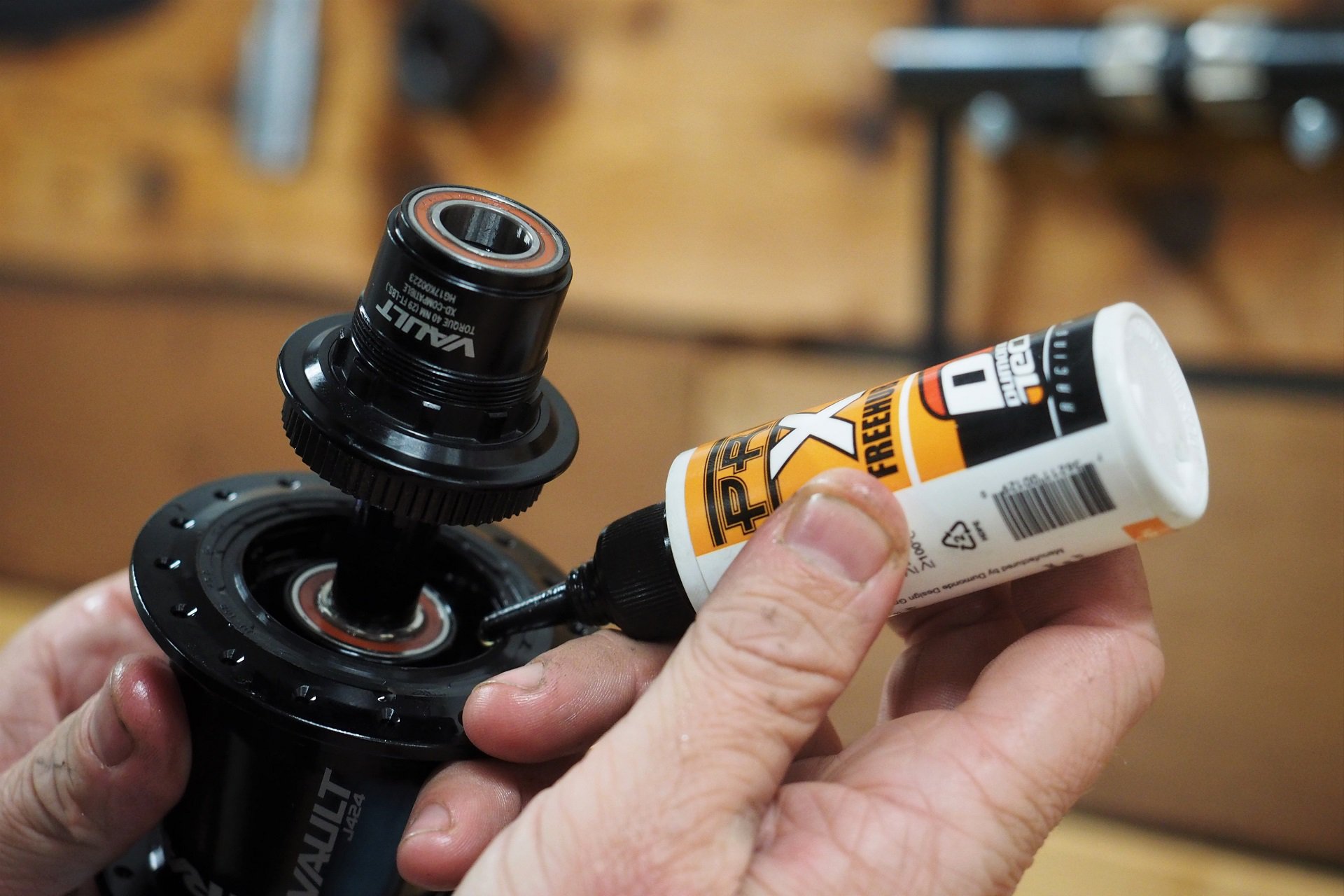
Dumonde Tech freehub lube is my choice for pawl drive systems. It cuts down on service and stays cleaner compared to using a light synthetic or mineral oil.
I've been mainly riding a silent True Precision Stealth hub and a very quiet Project 321 hub* so the first ride on the Vault all I could hear was the freehub buzzing. As with the P321 and my Industry-Nine, I ended up slurrying a little bit of Slickoleum with the freehub lube just to quiet things down a touch.
*Long term review coming soon
Front Hub
I've long been of the opinion that a front hub is a front hub but I have a thing about hubs matching. I've happily owned bikes that use two different wheel sizes, alt-bars, and Plus front tires with regular rear tires and none of that business bothers me. But hubs? Let me tell you... If this isn't a concern for you, it's easy to match a black rear hub with something cheap and basic. While the Vault front hub is a stylistic match, it's a bit overpriced at 175 USD.
First Rides
I love silent hubs, but it didn't take me long to adapt to the hungry high pitched whine that chases me down the trail with the Vault. In order to acclimatize I removed the silent hub from my single speed and so every ride lately has included a symphony. Now that the trails are busy it's nice that other users are alerted to my presence. Running silent there is the odd time folks are surprised to see me. With the Vault, even trail runners with their headphones in and Elton John CRANKED to the MAX know when I'm coasting. It's cool man, I love I'm Still Standing too. I am a little concerned what that's doing to your hearing though. Huh? No, it's all good I didn't say anything.
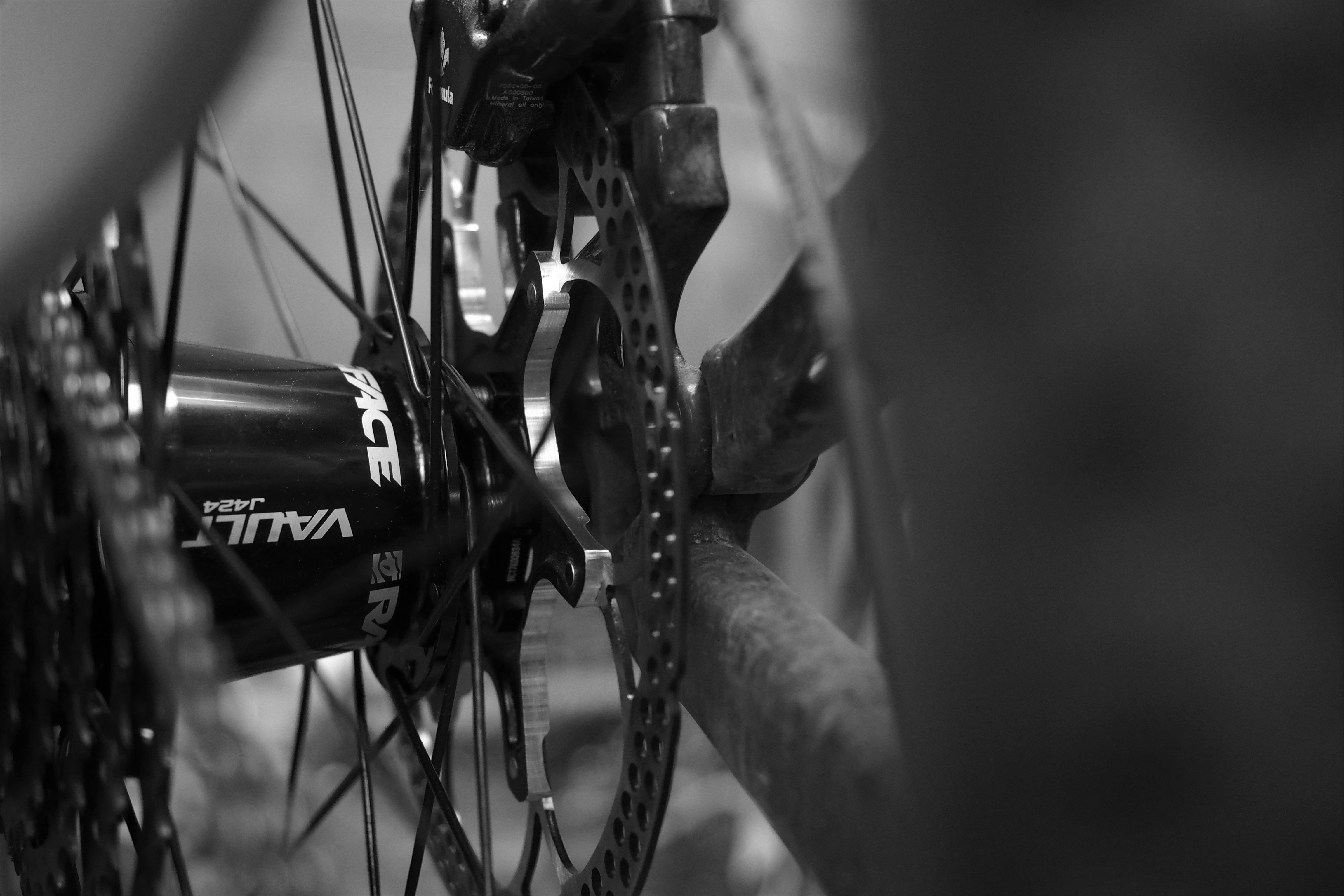
The whole backend's on a longterm test. Formula Cura brakes, a new e13 cassette, and the Vault hub.
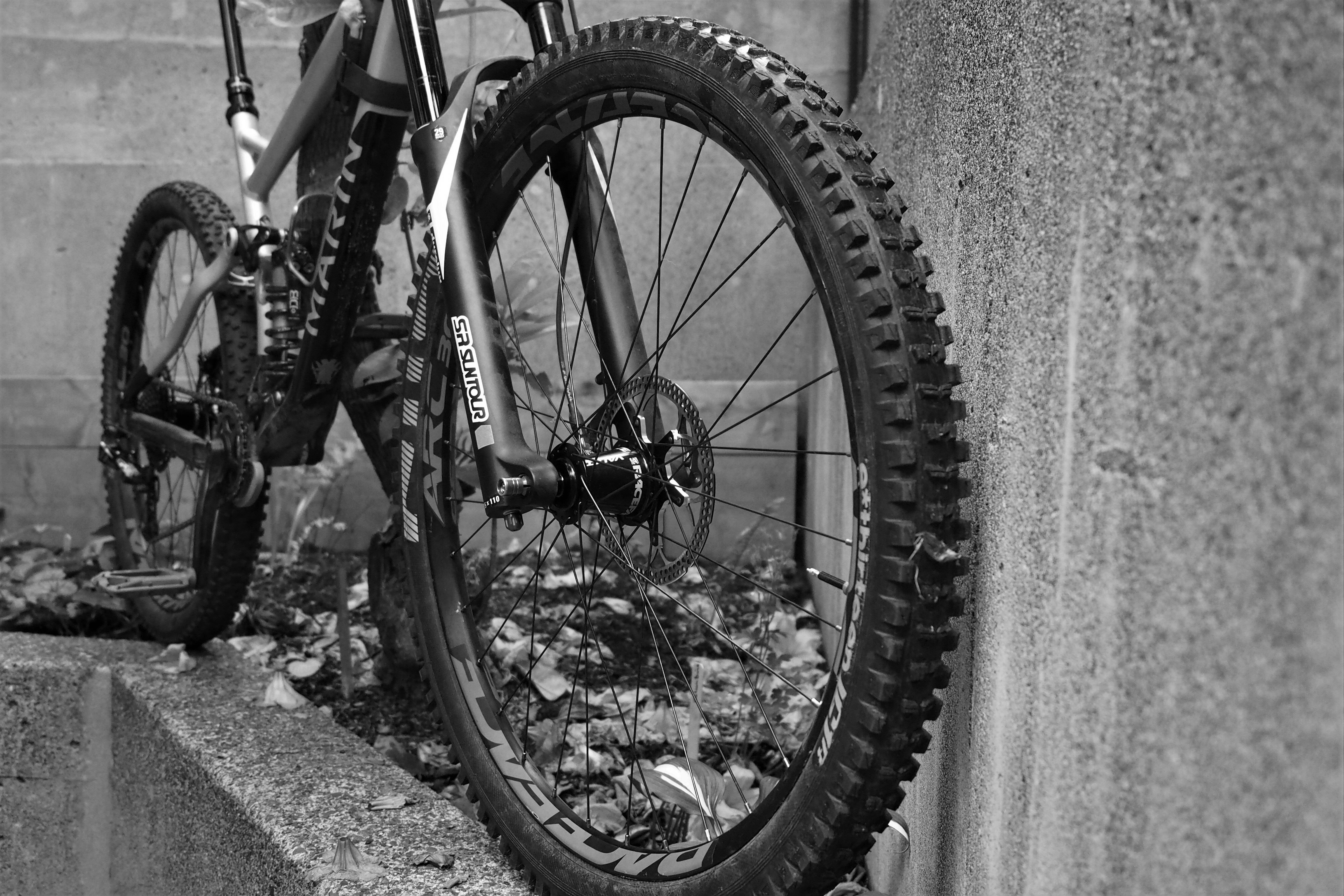
The matching Vault front also laced to an ARC 30 rim with DT butted spokes and TLC brass nipples.
At this point, I can say the hubs look great, roll great, come apart easily for service and look to be well sealed. I like my rear hub to engage as quickly as possible and 120-point is close enough to instant to be perfect for me.
Vaults sell for 350 USD for the rear and 175 USD which makes them towards the less expensive end of high-performance hubs, depending on how you define the category.
For more information on spec options please check out the Vault hubs on Race Face's website here. I'll be back with a full review once I have enough hours on the hubs to justify it.







Comments
MTBrent
5 years, 10 months ago
Still love these teardown articles. Keep 'em coming! And seals on seals on seals; Excellent.
Andrew, have you ever ridden current Profile Elite hubs? I'd love to read a thorough mtb-specific teardown/review of them and if they really are audible from the space station...
Also, looking forward to the P321 long-termer.
Reply
Andrew Major
5 years, 10 months ago
Thanks Brent,
I regularly ride a Profile Racing hub but it’s from maybe 2000 or 2001.
I don’t know that their 4-Ti-Pawl driver system has changed in all those years?
It’s 135mm bolt-on so it lives on my commuter now. I’ve done the bearings a few times and the pawls once but that hubs been through war and keeps kicking.
I’d love to check out their current product - the company has a great story and makes great stuff in Florida.
Reply
kekoa
5 years, 10 months ago
Funny...the comment about having to have your hubs match. I'm the most 'i don't give a crap' person and mismatched hubs/rims/tires would make me crazy. I used to run matched tubes and one of the older wrenches where I worked showed me the error of my ways.
Reply
Adrian White
5 years, 10 months ago
Great article Andrew, I also really enjoy reading these "tear down" pieces. I think I remember an article about the True Precision silent hub, but you have ever looked at the Nobl/Onyx?
After many years on Hope hubs, I decided to treat myself to a premium hub set. I9 and CK were obvious options, but the silence and uniqueness of the sprag clutch lured me.
I've been super happy with mine for the last 2 seasons and would be really interested to see how they hold up to the scrutiny.
Reply
Andrew Major
5 years, 10 months ago
Thanks Adrain,
I’ve got a few hours of riding on a few different Onyx hubs but never had the opportunity to ride them long term.
Jon Harris reviewed the Onyx guts as part of his NOBL wheel review for NSMB.
Aside from unsprung weight arguments, the engagement is nearly instant and the quality is high. I know a couple (literally two) riders personally who could feel the hub “winding up” after it was engaged and didn’t like the feeling (both ditched their hubs) but that a tiny portion of the folks I’ve met riding them on NOBL wheels or otherwise.
Based on what I know, I think they make a great long term purchase - at least certainly for a hardtail.
Reply
Agleck7
5 years, 10 months ago
Always back to the same question with hubs: how is this better than a DT 240/350? I know folks like variety, but it's always the pivotal question.
Reply
Andrew Major
5 years, 10 months ago
If DT Swiss hubs work for you the drive system is easy enough to service and the quality/reliability of their basic 16t drive system is excellent.
I like fast engaging hubs. I like them climbing technical trails. I like them descending technical trails. I like them accelerating from a stop on smooth gravel paths.
I’m not paying premium-hub money for 20° engagement.
The 36t ratchet upgrades can be reliable depending on the rider and the gears they are pushing. I have a couple buddies running 36t ratchets that carry the 16t in their packs in case they peel the faces off the 36t again.
I’m not paying a premium for a hub, then an expensive premium for two more ratchets, to get 10° engagement and a system that’s less reliable than a regular pawl hub.
DT Swiss makes a 54t ratchet kit. Apparently it was at the behest of Trek. The people I know who bought a set of ultra-premium priced little ratchets haven’t been happy with them - short lives, skipping, frequent rebuilds.
I’m still only at 6.6° engagement and now I’ve taken one of the most reliable (at 20°) hub systems on the market and turned it into a question mark.
Again, if you’re happy with 20°, or maybe 10° depending on you/your riding, then I see no reason not to love DT Swiss.
I’m okay with Mavic at 7.5° but if I’m spending money on a hub it’s in the 3° engagement - or faster - category.
For engagement-agnostic riders, DT Swiss product makes a lot of sense. Lots of riders care and DT Swiss won’t even be on their radar.
Reply
Agleck7
5 years, 10 months ago
Fair play. I knew there were issues with the 54, but didn't know the 36 was an issue. And it is annoying that the 36 is another $85...
Reply
Andrew Major
5 years, 10 months ago
The counter argument exists that many people are riding the 36t ratchets without issue - but it’s still a premium (hub + ratchets) to pay for 10° engagement.
And yeah, the 54t ratchets make the 36t models look cheap.
Reply
Steve
5 years, 10 months ago
This comment has been removed.
big-ted
5 years, 10 months ago
I'd add to the comments below that the thread-in DT drive ring that has to be removed to change out the drive-side hub bearing is simply a terrible design. When other hub manufacturers can make a hub that can be fully rebuilt without specialist tools for reasonable money, there's no way I'm paying out the money DT ask for for a hub that needs a blow torch & a (actually several depending on how many you break getting the seized drive ring out) specialist tool to replace the bearings in.
Reply
Perry Schebel
5 years, 10 months ago
that's a silly detail. i wonder what was wrong with the old splined interface with the drop in drive rings? i have an original dt/swiss hub from 2001 or so that's still running fine.
Reply
big-ted
5 years, 10 months ago
To be clear, I don't think anything has changed. The ratchet-rings still drop in, but the hub side ratchet ring slides into a steel drive ring that threads into the hub body. Under load, this drive ring tightens into the hub body. Add in a bearing's lifetime of riding, moisture, use etc, and inevitably the drive ring is seized into the hub. It needs to be removed when changing the bearings since the ID of the ring is smaller than the OD of the hub bearing. It's an awful design, and single-handedly why DT hubs are massively over-rated in my opinion.
Reply
Darryl Chereshkoff
5 years, 10 months ago
Being a Race Face / Easton designed product requiring bearings, I'm betting we can count the life of those bearings in weeks, not months - much less years...... 3 guesses how I know, and the first 2 don't count.
Reply
Andrew Major
5 years, 10 months ago
The bearings were all well greased; I had a great experience with bearing quality on the Aeffect R wheels.
I’ll certainly talk about bearing condition when writing the final review.
Reply
Andy Eunson
5 years, 10 months ago
I’ve wrecked a 36 tooth star ratchet probably from a bit too much grease. That may have caused the ratchets to stick a bit and not engage fully. Using a small amount of the correct grease and it never happened again. I don’t get too fussed about really rapid engagement. I can tell the difference between my Hope hub and I9 hub but it makes no real difference in my riding. I can tell the difference with the slow engagement DT ratchet and I don’t care for that but again it’s not a huge difference for me.
A hub that requires little service and is easy to do when it needs it is what is important to me. The next instalment on these hubs will be the important one.
Now if I can figure out how to make 30mm bsa B.B. last more than six months I’ll be happier.
Reply
cgordon
5 years, 9 months ago
(Long-time reader, first-time poster). Thanks for this great article, Andrew. I recently purchased a Turbine R rear wheel with Vault hub and have been digging it so far. I don't think I could go back to a hub with slower engagement now, and I actually find the hub quieter than the Hadleys, Chris Kings, and Hopes I've ridden previously.
However your comment of the hub not having noticeable drag is the opposite of my experience, but it's only noticeable in the repair stand. If I spin the wheel by hand (not spinning the cranks hard) it spins freely for a second before quickly slowing and coming to quite an abrupt stop. I don't notice it while riding though. Do you have any suggestions? I've emailed Race Face but didn't get a response.
Reply
Walker Harris
5 years, 4 months ago
Hey- I'm having the exact same experience. The bike is noticeably slower on milder descents than with the stock wheels. Were you able to improve the performance at all with the recommendations below?
Reply
A_Marriott
5 years, 9 months ago
cgordon,
As Andrew points out there are several endcap seals on each hub. I would check there first. These are specifically the endcap seals not the seals on the bearings.
1. pull off the NDS endcap and add a light grease or oil to the lip of the seal.
2. If running Shimano cassette body pull off the DS cap and add a light grease or oil to the lip of the seal. If running and XD body there is no endcap seal
3. Pull off the cassette body and add a light oil to the lip of the cassette body seal.
You should be able to remove all endcaps without tools.
Hopefully this will improve the drag to and acceptable amount for you. If you live in a dry area you can also remove the endcap seals all together (but not the cassette body seal), same goes for the front.
Reply
Andrew Major
5 years, 9 months ago
Apologies I'm late responding CG and absolutely follow what AM said. All rear hubs have some level of drag compared to a front due to the drive system but in my experience that Vault should spin relatively freely.
I'm sure you've considered this, but just in case (and for anyone following along at home) it's a good idea to unbolt the rear brake caliper just to be certain none of the drag is coming from the brake.
Reply
cgordon
5 years, 9 months ago
Thanks for the replies AM's. I'll give those a shot and see how it goes. With more rides on it the hub seems to freeing up as well. Cheers!
Reply
Oscar Paredes
5 years, 2 months ago
So I'm still running a 10 speed and have the Turbine R wheelset in 28H. I'm wondering in theory here if you can change out the hub body to a XD driver body and put on the elusive and hard to find now 9-42 e 13 cassette 10 speed on it. If I'm not mistaken I see what looks like part numbers on the hub bodies but nothing is listed on the manufacturers site for them. Would be cool to see if you'd frankenstiened one and it worked!!
Thanks
Reply
Peter S
5 years, 1 month ago
Can anyone tell me if I can convert a Vault non boost hub to a boost hub? Looking to go from 12/142-15/100 to 12/148-15/110. Any help is appreciated.
Reply
canterbury
2 years, 10 months ago
Hey Andrew.
For those of us that acquired our Vault hubs through a wheelset we get the 28h straight pull. I'm sure most of us would have preferred j-bend 32 hole but it is what it is.
If you do a search online the dimensions for the straight pull Vault are nowhere to be found. I've never managed to get a reply from RF on this... and if you believe some of the forums there's people claiming RF just simply refuses to share.
Would be great if RF could point someone like yourself from industry to the specs for the straight pull Vault so those of us trying to order spokes and use spoke length calculators arent guessing, or can confirm our own measurements.
Cheers
Reply
Andrew Major
2 years, 10 months ago
I haven't seen that information anywhere, but you could just measure a spoke?
Also, there's a fairly substantial difference between different rim ERD's so if you're rebuilding wheels onto new rims you're going to need to calculate the difference between your Race Face rim and new rim anyways?
Reply
canterbury
2 years, 10 months ago
Exactly - but i'm also not convinced RF's single spoke length is best and the RF rim is offset and likely the replacement rim wont' be.
Which is why it would be nice for RF to share the Vault hub specs to help minimise effort and errors rather than trying to rely on measuring existing spokes, etc.
Almost all manufacturers (DT Swiss for example) make this information widely available on their websites.
Reply
Andrew Major
2 years, 10 months ago
Some companies share this information and some don't. Certainly, it's much easier to calculate yourself with a J-Bend hub and that's one of the reasons I generally avoid direct pull wheels like the plague whether for my own use or when reviewing products.
They're also much more of a PIA to routinely true/tension whether at home or in a shop.
I don't mean to be flippant, I just feel that as much as some companies (DT Swiss is a prime example) really push direct pull spokes that anyone who builds wheels by hand has been waving the J-Bend flag long enough and that every mechanic I know is such a vocal fan of J-Bend over DP, that most anyone who is/was planning to lace up their own hoops could have (should have?) easily made the choice to go J-Bend initially?!?
I feel vindicated in this regard as I routinely speak to the superiority (in my opinion) of J-Bend including noting them as a benefit. For example, I think they're a factor in what Bontrager's Line Elite Carbon is the far superior purchase over their more expensive 'Pro' model with the same hub guts
If I had the information I'd certainly share it with you. But between writing part-time for NSMB and working part-time turning wrenches those aren't dimensions that I have.
Reply
Andrew Major
2 years, 10 months ago
Based on a quick Google search, all the spokes on the 27" wheels are 284mm and all the spokes on the 29" wheels are 304mm.
General disclaimer that I don't have ready access to these wheels and have not independently verified this information.
Reply
Please log in to leave a comment.